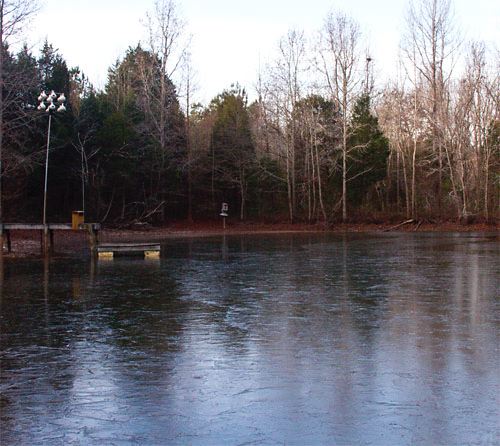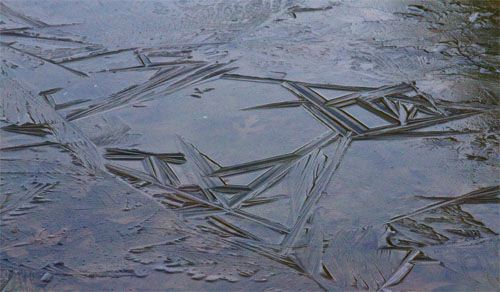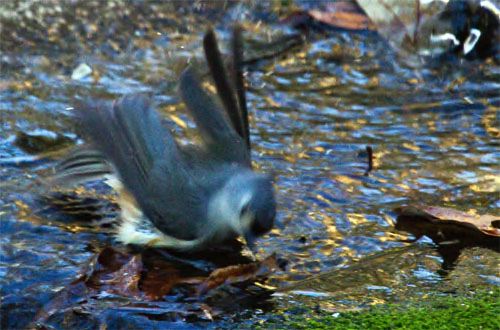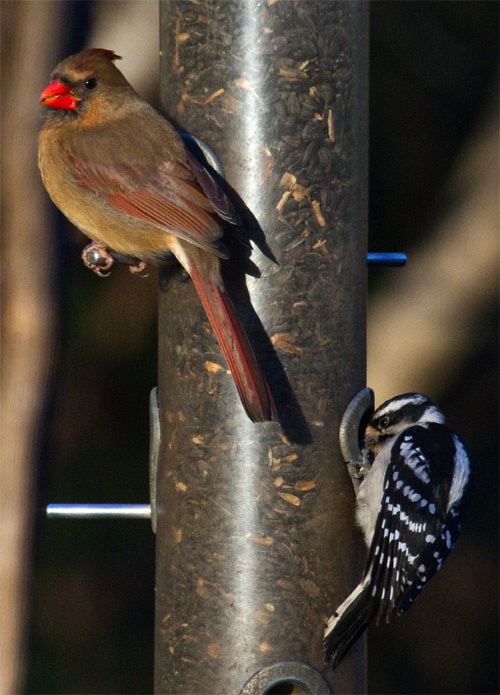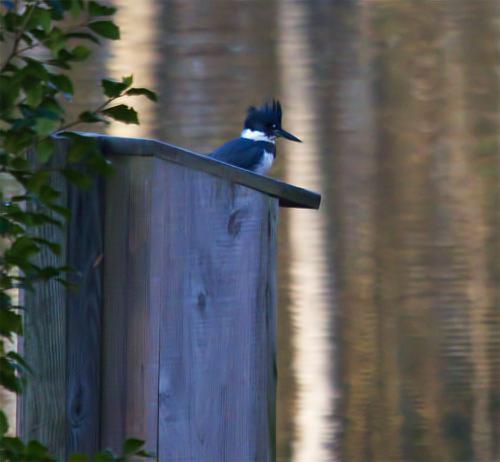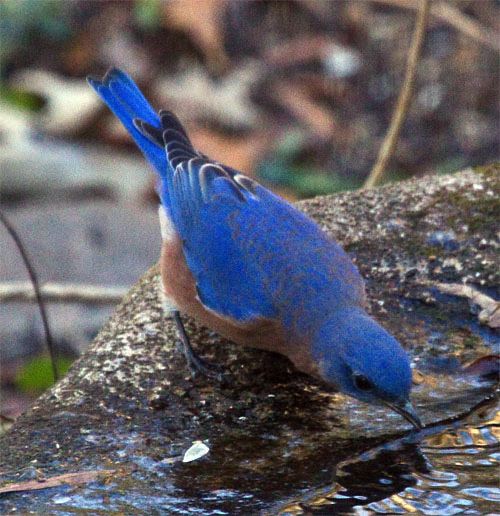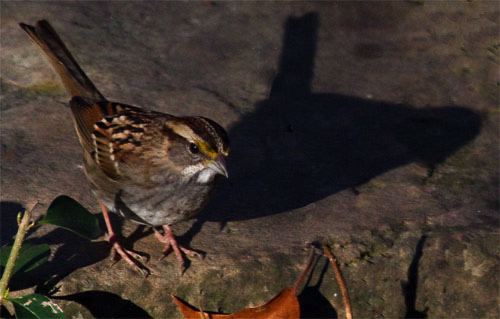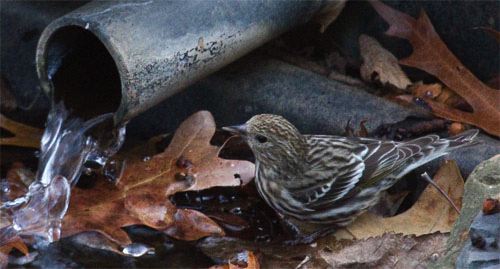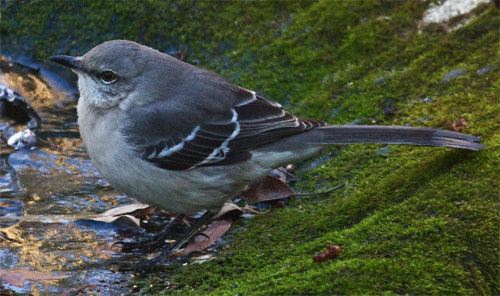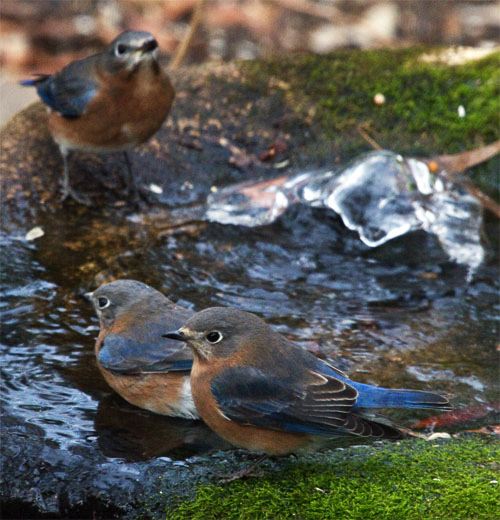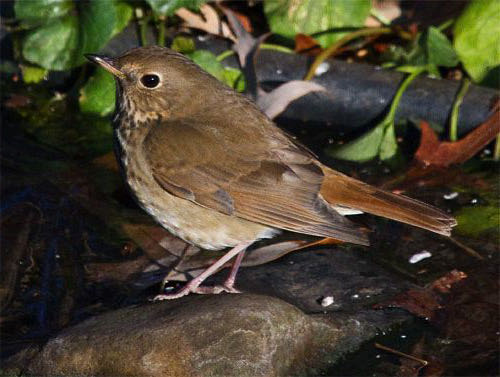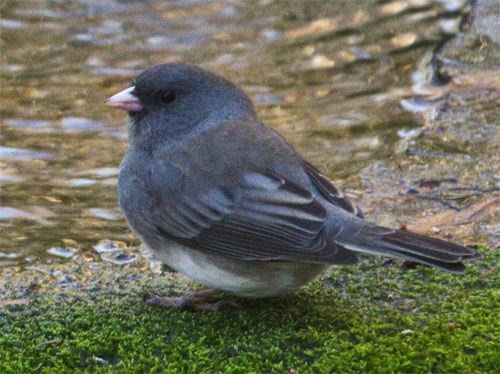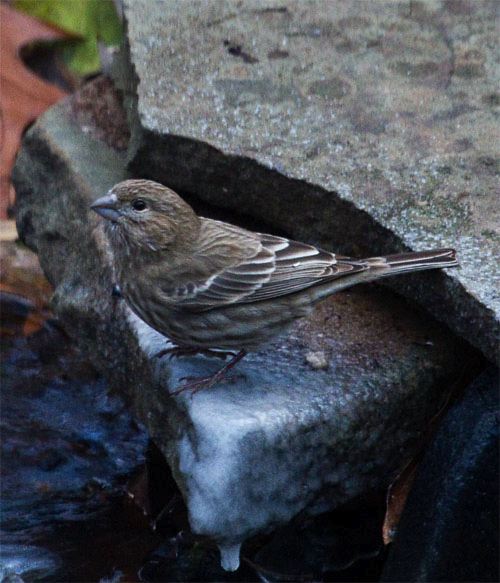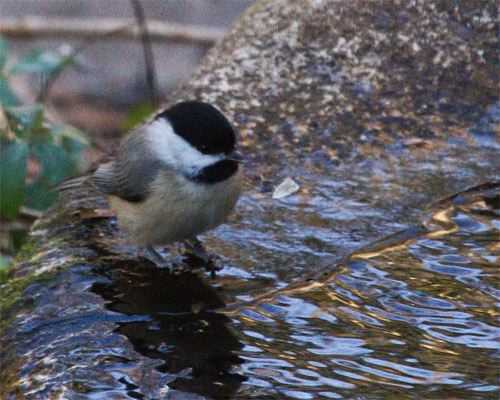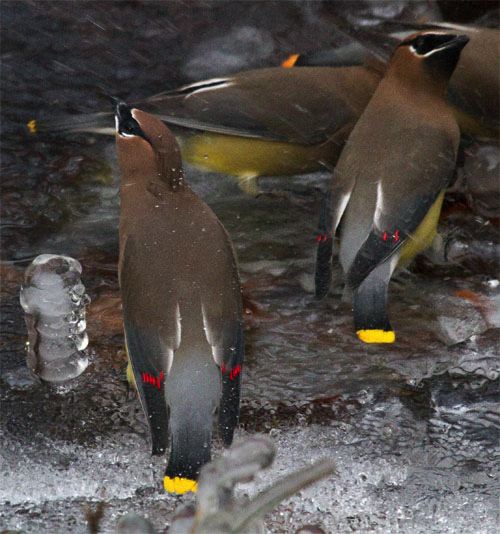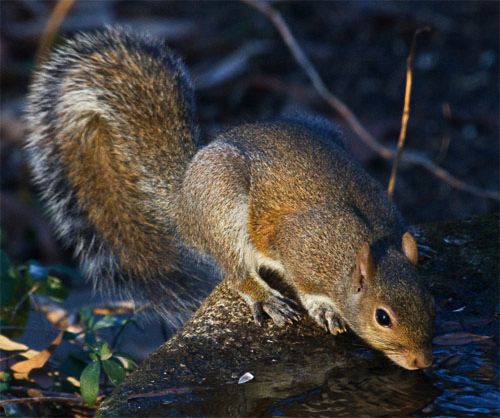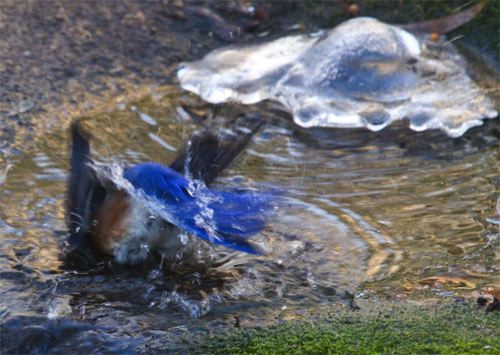|
|
|||
|
THIS WEEK at HILTON POND
1-11 December 2010 Installment #495---Visitor # (Back to Preceding Week; on to Next Week) |
|
SIGN UP FOR 2 OR MORE TRIPS; GET $100 OFF ON EACH Join fellow birders & educators as citizen scientists on 2011 Operation RubyThroat expeditions to observe, capture & band hummingbirds in Belize, Guatemala & Costa Rica. No experience necessary! |
|
All text & photos © Hilton Pond Center WINTER WATER: 14 . . . 15 . . . 19 . . . a series of two-digit numerals. If we were mathematically inclined we might try to find some pattern or special relationship among them, but what they stand for is really quite simple: They're our overnight low thermometer readings in Fahrenheit at Hilton Pond Center for 7-9 December 2010. These readings represent for us in the Carolina Piedmont what is brutally cold weather--especially for early December. The lows of 14 and 15 on the 7th and 8th were both new records for York SC and well below the average low of 35 and 36 for those two dates, while the reading of 19 degrees on the 9th was just two degrees above the all-time record set back in 2006.
All text & photos © Hilton Pond Center On all three frigid mornings we rose before dawn to stoke the wood stove in the Center's old farmhouse. When the sun finally came up, we could tell the surface of Hilton Pond was covered completely with a thin layer of ice (see top photo) that included some fascinating geometric patterns (just above). A fully frozen pond is something we can't recall having seen quite this early in the season--and winter won't even be here officially until 21 December! When it's this cold, we tote as much firewood as we can carry, sidle up to the stove, and think about how nice it is to be indoors. We also ponder our "less fortunate" feathered and furry friends making do with a tree cavity or underground burrow--or even just hunkered down within wind-blocking boughs of an evergreen tree or shrub. These native birds and mammals actually do quite well in sub-freezing temperatures and--in the absence of heavy snow cover--are usually able to find natural foods in field and woods. Many of us humans supplement nature's bounty with sunflower seeds and suet, cracked corn and millet, but perhaps of greater importance to winter survival is unfrozen water--something animals need frequently.
All text & photos © Hilton Pond Center No matter the season, water is indeed essential for life. Here in the Carolina Piedmont we're fortunate to have open water in ponds and streams nearly all year long. After all, that's one big factor that brings ducks, geese, and other aquatic birds south when snow falls and lakes freeze solid up north. Most days when we gaze out our windows we observe an unfrozen Hilton Pond, or--closer to the farmhouse--a water garden with homemade concrete bowl on a rock pedestal (above) and rivulets cascading from one small in-ground pool to the next. This week, with overnight temperatures in the 'teens and daytime highs still below freezing, water around Hilton Pond's perimeter got locked up as ice and became inaccessible to wildlife. In the water garden, however, a recirculating pump allowed some ice to form but prevented a solid freeze; thanks to this moving, available water an amazing number and variety of birds flocked to our artificial water source.
All text & photos © Hilton Pond Center Birds and small mammals need hydration year-round, of course, and must regularly replace water lost to respiration and metabolic processes. But in addition to having water to drink, wild creatures must bathe often no matter the ambient temperature. For them, cleanliness is next not to godliness but to survival, mostly because dirty feathers and soiled pelage do a poor job of insulating and repelling moisture. People often express surprise when they see birds frolicking in a bird bath when the temperature is at or below freezing, but these feathered animals know what they need to do to stay alive. A fast-flapping Eastern Tufted Titmouse (above) was in the water for only a few seconds--just long enough to moisten its plumage so it could retire to a spot in the sun and preen out the dirt. Small mammals are able to clean themselves by licking their fur, but birds--which lack protruding tongues--must bathe, dry off, and re-annoint their feathers with water-repellent oil.
All text & photos © Hilton Pond Center When folks ask us what they can do to attract birds to their yards, the first word we utter is "habitat." You seldom get wildlife other than European Starlings and Ring-billed Gulls in a desert-like K-Mart parking lot or in an over-managed clear-cut grassy lawn, so it's important your property include habitat created by trees and shrubs and other vegetation to provide shelter from the elements. Our second suggestion for attracting birds is always "water," which many homeowners provide only as an afterthought. They happily buy or build bird feeders and stock them with expensive thistle and sunflower seeds that attract birds like female Northern Cardinals and Downy Woodpeckers (above), not remembering that "food"--which is third on our list of recommendations--is less important than "water." (The old maxim is basically true: Most animals can get along without eating for three weeks before dying from starvation, but unquenched thirst will kill in three days.) Thus, we stress the importance of providing clean water in a backyard habitat, knowing--and you can quote us on this--"Water often attracts wildlife quicker than food."
All text & photos © Hilton Pond Center We're fortunate the Center includes one-acre Hilton Pond, plus another reservoir that's partly on the property. These relatively large impoundments are very appealing to birds that utilize available water in various ways, be it drinking, bathing, feeding, or avoiding predators. (After the pond froze over we didn't see too much of our resident Belted Kingfisher pair, see male above, likely because they elected not to crash into ice while diving after prey.) The pond is a terrific habitat, but many birds find much smaller water features even more attractive--especially if a pump provides movement and the sound of running or dripping water. As temperatures plummet, water becomes an increasingly precious commodity, so an unfrozen bath or pool becomes an irresistible magnet for thirsty birds.
All text & photos © Hilton Pond Center Such was the case on those three brutally cold mornings this week, when we watched wave after wave of birds swoop in to drink and bathe in little pockets of water within the pools near the farmhouse. On each frigid day we saw more than a hundred individual birds--the majority were Cedar Waxwings and Eastern Bluebirds (see above)--and we took photos through double-paned glass that kept us warm from our kitchen observation point. (The glass allows a clear view but does degrade a photographic image--especially on cloudy days when light is poor.) When we later examined our digital images we realized the cold-weather water garden had attracted at least 19 bird species; since we couldn't spend all day looking out the window we suspect a few others were missed. (A complete list of species that showed up this week at our water garden is included in "Other Nature Notes" near the bottom of this page.) As evidence of this week's winter water spectacle, we provide below a gallery of just some of the birds (and mammals) that drank or bathed as the mercury stayed well below freezing at Hilton Pond Center.
All text & photos © Hilton Pond Center
All text & photos © Hilton Pond Center
All text & photos © Hilton Pond Center
All text & photos © Hilton Pond Center
All text & photos © Hilton Pond Center
All text & photos © Hilton Pond Center
All text & photos © Hilton Pond Center
All text & photos © Hilton Pond Center
All text & photos © Hilton Pond Center
All text & photos © Hilton Pond Center
All text & photos © Hilton Pond Center
All text & photos © Hilton Pond Center
All text & photos © Hilton Pond Center
We're hopeful these photos from Hilton Pond Center will stimulate you to supplement your backyard bird and wildlife feeding operation with a water feature of some sort. Here in the Carolina Piedmont they're predicting another week of bone-numbing low temperatures for mid-December 2010, but even if you live in balmy southern California or the Neotropics we guarantee water will bring more birds than food alone. And if you don't have space for a garden pool and mini-waterfall, we suspect you still can squeeze a bird bath into your yard or place a large shallow dish on the deck. Change out the water a few times each week to minimize disease transmission and, if you like, keep your set-up completely unfrozen with a low-wattage heater from the local farm supply store or birding shop. In any case, don't ever gorget to provide winter water. It's a magnet for chilly birds that need it to survive.
All text & photos © Hilton Pond Center If you have a Twitter account and liked this page, you can recommend "This Week at Hilton Pond" to your followers by clicking on the Tweet button: Tweet Follow us on Twitter: @hiltonpond
|


